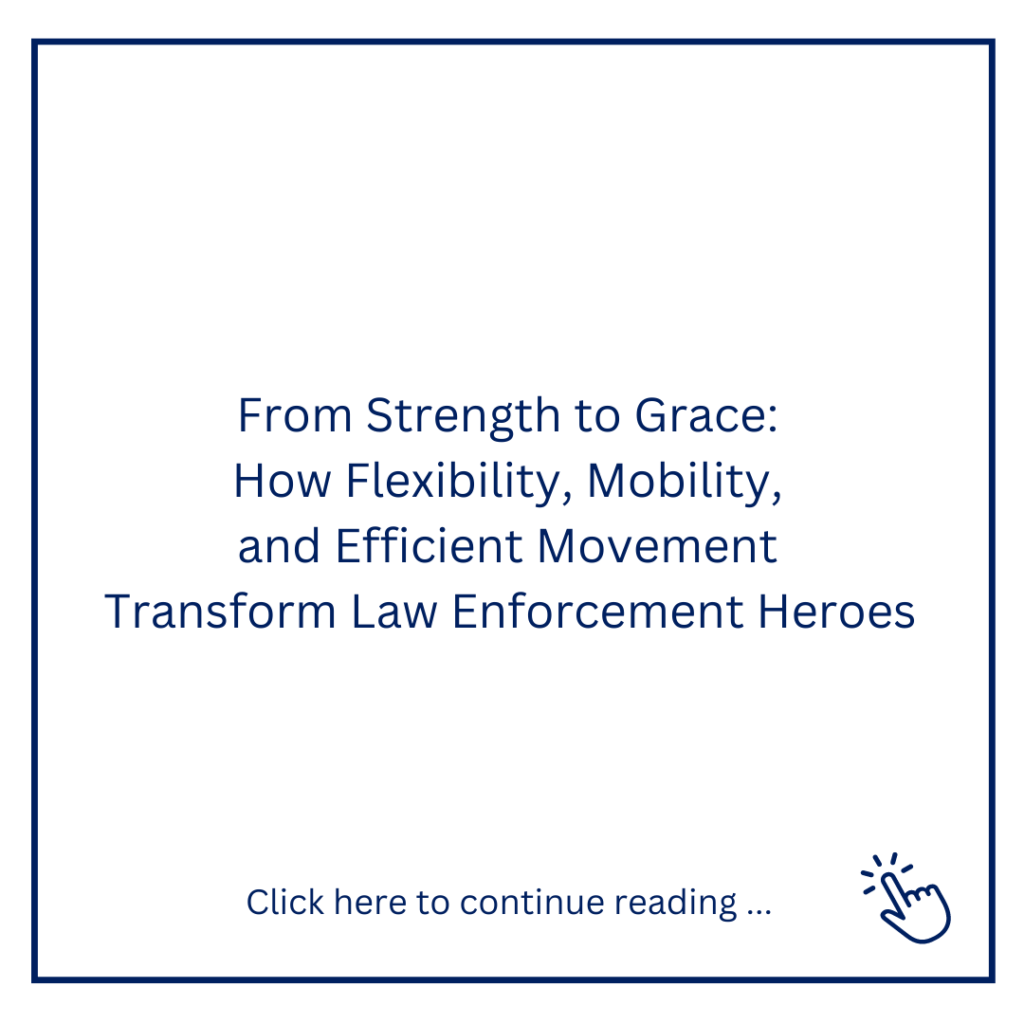
Law enforcement officers face unique physical demands and challenges in the line of duty. From chasing down suspects to maintaining situational awareness, your performance relies on a combination of strength, agility, and mobility. In the pursuit of excellence, it is crucial for law enforcement officers to incorporate mobility and flexibility. By incorporating targeted stretches into your daily routine, officers can enhance your range of motion, improve posture, and reduce the risk of injuries. Today I will unpack 13 essential stretches specifically curated to address the mobility needs of law enforcement officers. Whether you are a seasoned officer or a recruit embarking on your law enforcement journey, these stretches will help you unlock your potential and perform at your best, day in and day out. Get ready to stretch towards excellence and enhance your mobility like never before.
Standing Quad Stretch: Stand upright and grab your right ankle with your right hand, pulling it toward your glutes. Hold for 20-30 seconds and repeat with the other leg. This stretch targets the quadriceps, which can become tight from prolonged periods of standing or running.
Standing Calf Stretch: Stand facing a wall and place your hands on the wall for support. Step your right foot back and keep your right leg straight. Press your right heel into the ground to stretch the calf muscle. Hold for 20-30 seconds and switch to the other leg. This stretch is beneficial for officers who spend extended periods on their feet.
Butterfly Stretch: Sit on the floor and bring the soles of your feet together, allowing your knees to drop out to the sides. Hold your feet and gently press your knees toward the floor. Hold the stretch for 20-30 seconds. This stretch targets the hip adductors and can help improve hip mobility.
Seated Hamstring Stretch: Sit on the ground with your legs extended in front of you. Lean forward from your hips and reach for your toes. Keep your back straight and hold the stretch for 20-30 seconds. This stretch is effective for increasing hamstring flexibility.
Standing Side Bend: Stand with your feet hip-width apart and raise your right arm overhead. Gently lean to the left, feeling a stretch along the right side of your body. Hold for 20-30 seconds and repeat on the other side. This stretch promotes lateral flexibility and can relieve tension in the torso.
Triceps Stretch: Extend your right arm overhead and bend it so that your right hand reaches towards the middle of your back. Use your left hand to gently pull your right elbow toward your head. Hold for 20-30 seconds and switch sides. This stretch targets the triceps muscles, which can become tight from carrying equipment.
Shoulder Cross-Body Stretch: Bring your right arm across your chest, holding it in place with your left hand at the elbow. Gently pull your right arm closer to your chest. Hold for 20-30 seconds and repeat with the other arm. This stretch improves shoulder mobility and flexibility.
Neck Stretch: Sit or stand tall and gently tilt your head to the right, bringing your right ear closer to your shoulder. Hold for 20-30 seconds and repeat on the other side. This stretch helps relieve tension in the neck and improves range of motion.
Wrist Flexor Stretch: Extend your right arm in front of you with your palm facing up. Use your left hand to gently bend your right wrist, feeling a stretch in the forearm. Hold for 20-30 seconds and switch sides. This stretch is particularly beneficial for officers who spend time gripping objects like firearms.
Lunge with Twist: Step your right foot forward into a lunge position and place your hands on your hips. Twist your torso to the right, keeping your lower body stable. Hold for 20-30 seconds and repeat on the other side. This stretch enhances hip mobility and improves spinal rotation.
Hip Flexor Stretch: Kneel on your right knee with your left foot forward. Keep your torso upright and press your hips forward until you feel a stretch in the front of your right hip. Hold for 20-30 seconds and switch sides. This stretch targets the hip flexor muscles, which can become tight from sitting or driving for long periods.
Seated Spinal Twist: Sit on the ground with your legs extended in front of you. Bend your right knee and place your right foot on the outside of your left thigh. Twist your torso to the right, using your left arm to hook onto your right knee for a deeper stretch. Hold for 20-30 seconds and repeat on the other side. This stretch improves spinal mobility and releases tension in the back.
Full-Body Stretch: Stand tall with your feet hip-width apart and reach your arms overhead, stretching your whole body from fingertips to toes. Lengthen your spine and hold the stretch for 20-30 seconds. This stretch promotes overall flexibility and mobility.
Remember to perform these stretches with control and avoid bouncing or jerking movements. Aim to stretch regularly, especially after intense physical activity to maintain and improve your mobility as a law enforcement officer. Stay safe!

Degreed and Certified Fitness Professional – Certified Personal Trainer –
Certified Nutritionist – Owner of The Blue Hedge – National Law Enforcement Support Organization


